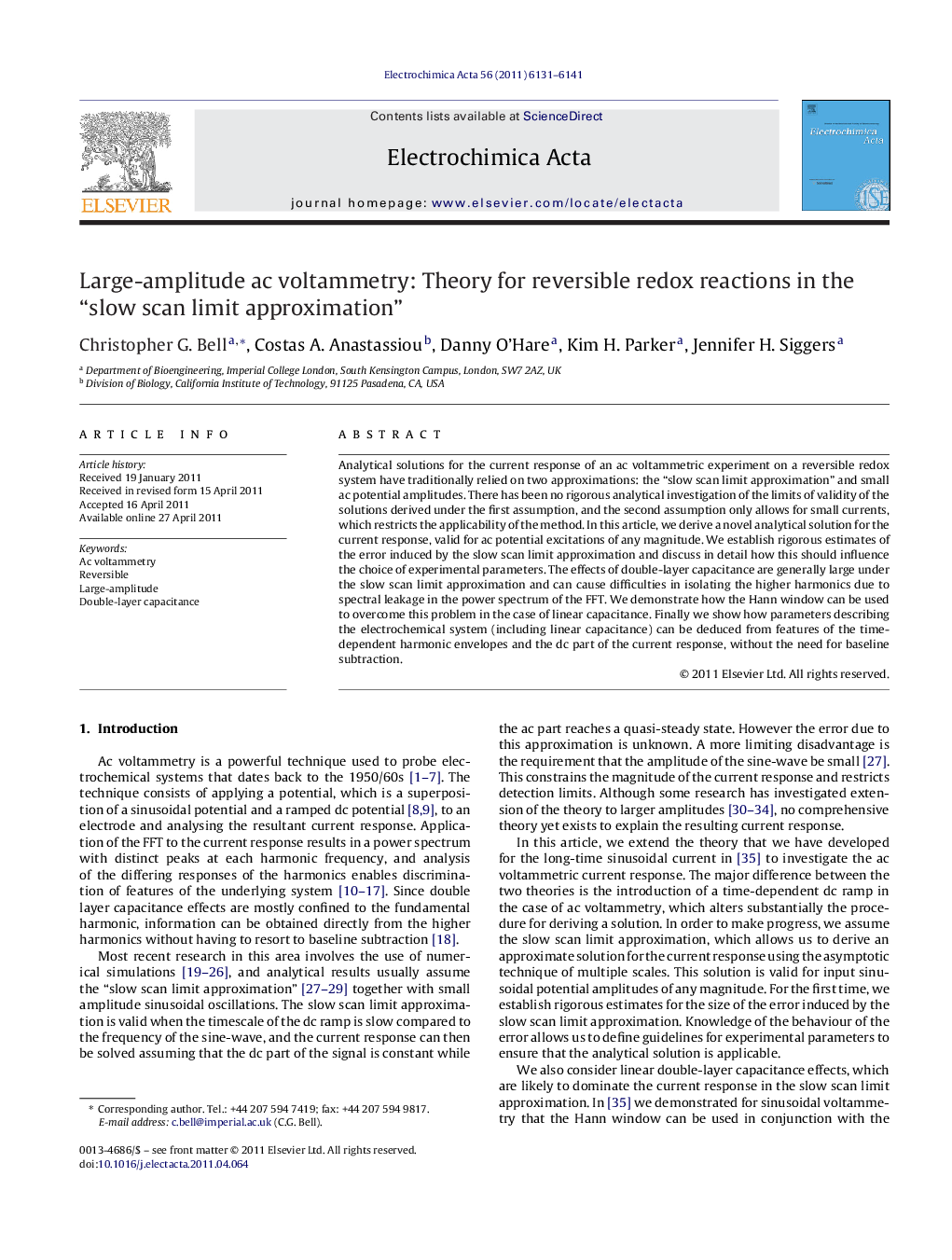| Article ID | Journal | Published Year | Pages | File Type |
|---|---|---|---|---|
| 189613 | Electrochimica Acta | 2011 | 11 Pages |
Analytical solutions for the current response of an ac voltammetric experiment on a reversible redox system have traditionally relied on two approximations: the “slow scan limit approximation” and small ac potential amplitudes. There has been no rigorous analytical investigation of the limits of validity of the solutions derived under the first assumption, and the second assumption only allows for small currents, which restricts the applicability of the method. In this article, we derive a novel analytical solution for the current response, valid for ac potential excitations of any magnitude. We establish rigorous estimates of the error induced by the slow scan limit approximation and discuss in detail how this should influence the choice of experimental parameters. The effects of double-layer capacitance are generally large under the slow scan limit approximation and can cause difficulties in isolating the higher harmonics due to spectral leakage in the power spectrum of the FFT. We demonstrate how the Hann window can be used to overcome this problem in the case of linear capacitance. Finally we show how parameters describing the electrochemical system (including linear capacitance) can be deduced from features of the time-dependent harmonic envelopes and the dc part of the current response, without the need for baseline subtraction.
Research highlights► Theoretical model for ac voltammetry applied to reversible redox systems. ► Analytical solution for the current response valid for large sinusoidal amplitudes. ► Rigorous estimates of the error induced by the “slow scan limit approximation”. ► Hann window plus FFT effective in the event of large capacitance interference. ► Protocol for deducing system parameters from harmonic envelopes and dc response.
